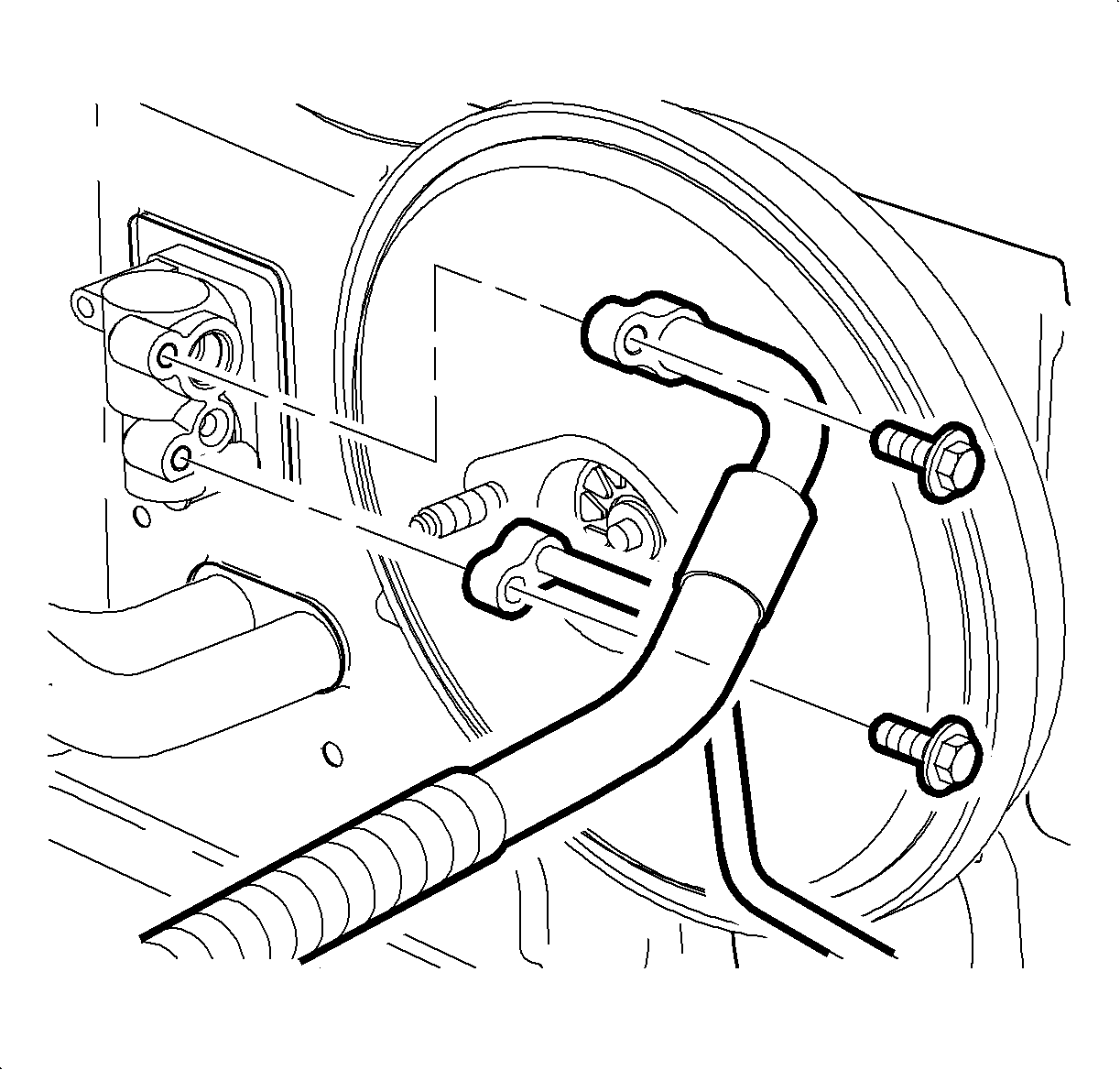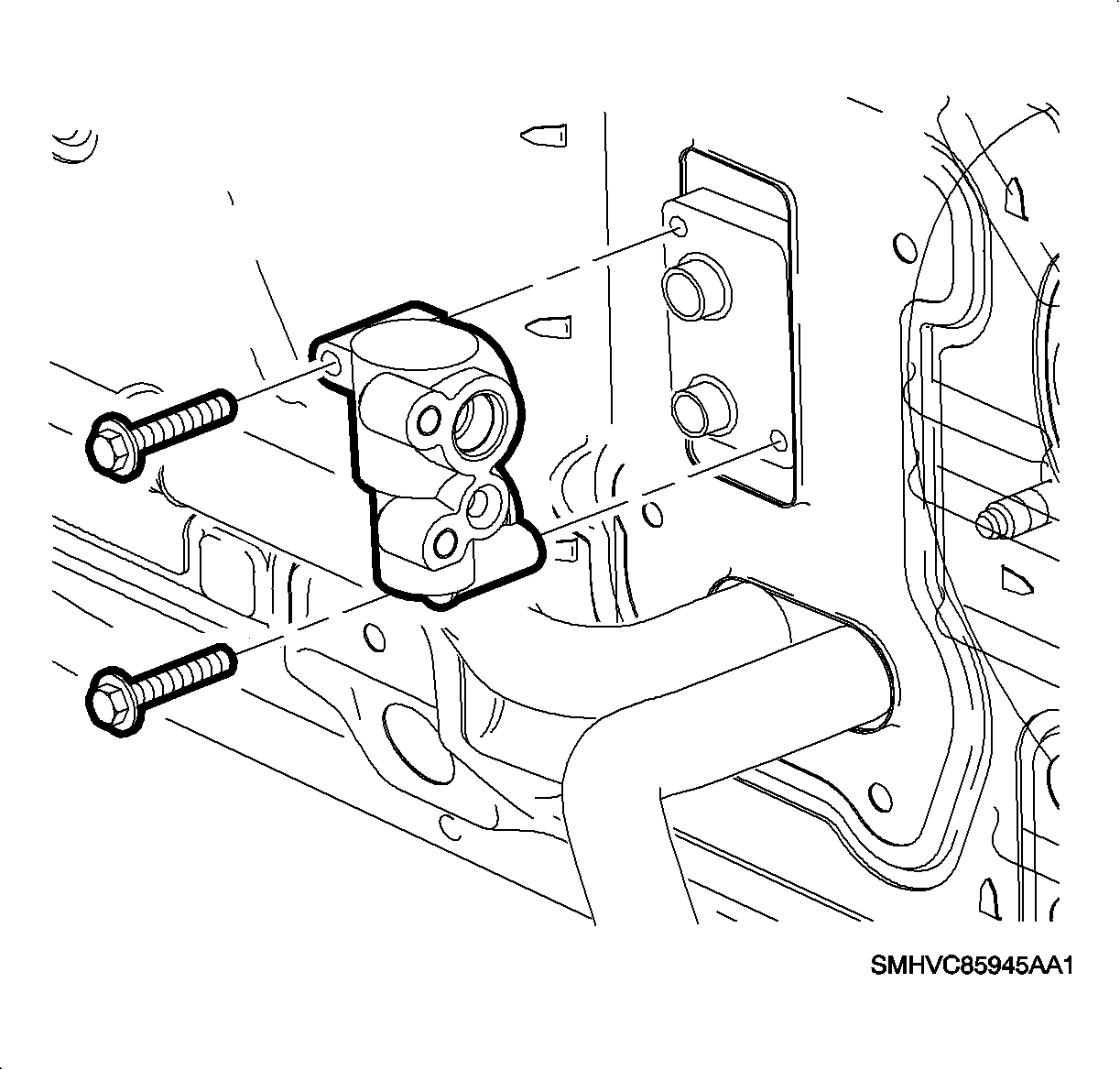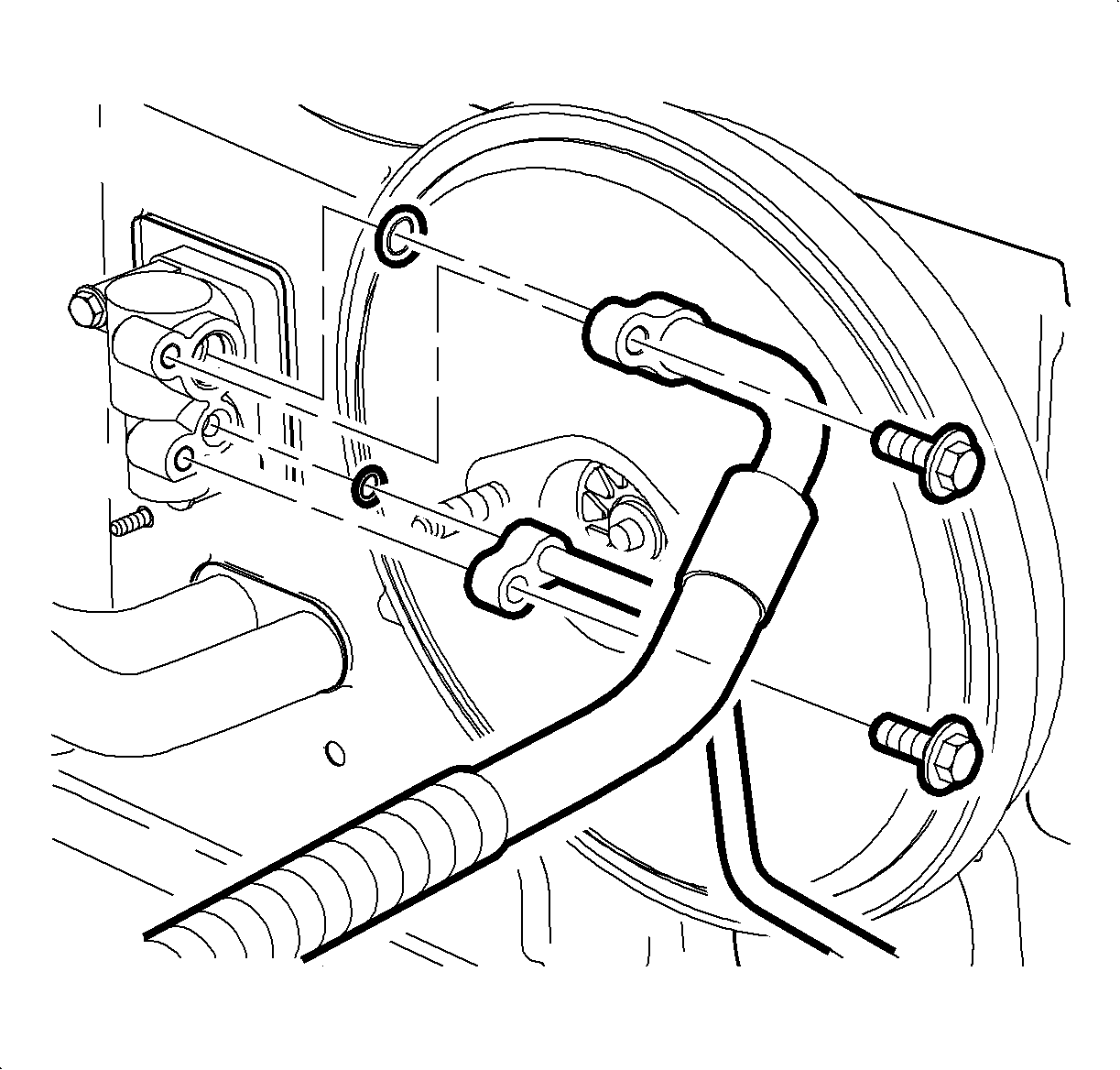Removal Procedure
- Recover the refrigerant using an approved refrigerant recovery system.
- Remove the air cleaner cover and the air induction hose at the intake manifold.
- Remove the suction hose from the TXV.
- Remove the liquid line from the TXV.
- Remove the TXV from the evaporator.

Important: Verifying the purity of the refrigerant with a refrigerant purity identifier before recovery is recommended.
Caution: Observe orientation of the shoulder harness belt to the rear compartment pan as shown in illustration. Incorrect orientation may result in personal injury.


Installation Procedure
- Lubricate with the R-12 Refrigerant mineral oil and install the new O-rings on the evaporator pipes. Remove the protective covers from the TXV.
- Install the TXV on the evaporator and tighten the bolts.
- Lubricate with the R-12 Refrigerant mineral oil and install the new O-rings on the suction hose and liquid line.
- Install the liquid line to the TXV. Install and tighten the bolt.
- Install the suction hose to the TXV. Install and tighten the bolt.
- Install the air cleaner cover and the air induction hose.
- Evacuate, charge, and leak test the A/C system.
- Run the system performance test.

Notice: Refer to Fastener Notice in the Preface section.
Tighten
Tighten the thermal expansion valve (TXV)-to-evaporator to 10 N·m
(89 lb in).
Notice: Use only Polyalkylene Glycol Synthetic Refrigerant Oil (PAG) for internal circulation through the R-134a A/C system and only 525 viscosity mineral oil on fitting threads and O-rings. If lubricants other than those specified are used, compressor failure and/or fitting seizure may result.

Tighten
Tighten the liquid line-to-thermal expansion valve to 25 N·m (19 lb ft).
Tighten
Tighten the suction hose-to-thermal expansion valve to 25 N·m (19 lb ft).

